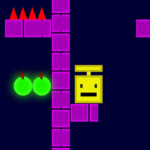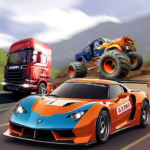Introduction
Among driving games that strive to replicate the real-world physics of automobiles, few come close to the depth and precision of BeamNG.drive. Released in Early Access in 2015 and developed by BeamNG GmbH, this vehicle simulation game is known for its soft-body physics engine, offering unparalleled realism in vehicular deformation, collision, and mechanical behavior.
Unlike arcade racers that prioritize speed and spectacle, BeamNG.drive is a physics sandbox where the tiniest detail—suspension articulation, tire flex, weight distribution—can impact how your vehicle handles. Whether you're tuning a rally car, hauling cargo over treacherous terrain, or crashing a truck into a wall just to see the parts fly off, BeamNG.drive gives players a playground for vehicular exploration and experimentation unlike any other.
The Origins and Early Access Journey
BeamNG.drive originated from a vision to develop a truly realistic car crash simulation. The development team, many of whom were modders and engineers, sought to build a platform where every part of the car could behave like its real-world counterpart—bending, breaking, and responding with real physics.
The game launched in Early Access in May 2015 on Steam, where it immediately attracted attention from simulation enthusiasts and modding communities. Although rough around the edges, it showcased a physics engine that impressed both gamers and automotive experts.
H3: Early Core Features
-
Soft-body physics engine
-
A small selection of vehicles and maps
-
Sandbox-only gameplay (no campaign)
Pros:
-
Revolutionary approach to car simulation
-
Modder-friendly infrastructure
Cons:
-
Sparse content at launch
-
No structured gameplay modes early on
Rating (Initial State): 7.0/10
Soft-Body Physics: The Game’s Defining Innovation
The true star of BeamNG.drive is its soft-body physics engine. Every part of a car—the hood, axles, chassis, suspension—is modeled as interconnected nodes and beams. This creates a dynamic system where vehicles behave like real physical objects, not rigid 3D models.
Collisions are not scripted. Damage occurs based on how and where the car is hit. This means no two crashes are ever identical, and even minor adjustments in speed, terrain, or impact angle can yield vastly different results.
Key Highlights:
-
Realistic deformation during crashes
-
Mechanical failure simulation (e.g., overheated brakes, broken axles)
-
Full vehicle disassembly through impact or stress
Pros:
-
Unmatched realism in vehicle damage
-
Essential for car crash testing, education, and fun
Cons:
-
Requires a powerful PC to run smoothly
-
Can feel complex for casual gamers
Rating: 9.5/10
Vehicle Variety and Customization
As BeamNG.drive evolved, its roster of vehicles expanded significantly. Today, the game features dozens of meticulously modeled vehicles, ranging from compact hatchbacks to semi-trucks, off-road crawlers, sports cars, and even fictional brands like Gavril and Ibishu.
Each vehicle includes numerous variants, with different engines, transmissions, body styles, and purposes (police cars, race versions, off-road builds). Customization goes even further with the Vehicle Configuration tool, which lets players modify every component, from tire pressure to fuel tanks and turbochargers.
H4: Popular Vehicle Types
-
Gavril D-Series (pickup truck)
-
Hirochi SBR4 (sports coupe)
-
Bruckell LeGran (sedan with tuning potential)
-
T-Series (heavy-duty truck)
Pros:
-
Massive selection of vehicles
-
Realistic handling differences between models
Cons:
-
No licensed real-world car brands
-
Some vehicle models are more detailed than others
Rating: 8.8/10
Maps, Environments, and Terrain Deformation
BeamNG’s worlds are more than backdrops—they’re integral to the gameplay experience. Maps are sprawling, diverse, and highly interactive. From the lush mountains of East Coast USA to the desert highways of Utah and the treacherous inclines of Italy, each map presents unique challenges.
Terrain in BeamNG.drive isn’t just visual—it’s interactive. Potholes, bumps, soft sand, and uneven ground affect traction, suspension, and control. Roads aren’t flat tracks but living landscapes that test vehicles in real-world ways.
Examples of Map Types:
-
West Coast USA (urban environment)
-
Jungle Rock Island (off-road paradise)
-
Gridmap V2 (testing arena with ramps, loops, and physics experiments)
Pros:
-
Immersive and diverse map design
-
Interactive terrain enhances realism
Cons:
-
No live traffic or dynamic weather in early versions
-
Some maps are CPU-intensive
Rating: 9.0/10
Gameplay Modes: More Than Just Crashing
Originally conceived as a sandbox-only experience, BeamNG.drive now includes several gameplay modes:
-
Campaigns – Structured challenges involving races, stunts, or vehicle delivery
-
Scenarios – Custom missions like police chases, obstacle courses, and hill climbs
-
Time Trials – Speed-focused challenges
-
Career Mode (Beta) – In development, but aims to add long-term progression and economy
Despite these additions, the game still thrives in sandbox mode, where creativity, experimentation, and chaos rule.
H3: Use Case Variety
-
Crash testing and replay recording
-
Driving skill practice (manual transmission, off-road handling)
-
Modding and creative building
Pros:
-
Variety of experiences from structured to sandbox
-
Campaign mode adds long-term goals
Cons:
-
Career mode still incomplete
-
Lack of online multiplayer gameplay
Rating: 8.5/10
Modding Community and User-Created Content
BeamNG.drive has one of the most vibrant and dedicated modding communities in the simulation genre. From real-world cars to fan-created cities, the community consistently expands the game’s scope.
Mods range from simple cosmetic upgrades to full-scale vehicles and complex gameplay scripts. The game includes a built-in Repository that allows for in-game mod browsing, rating, and updates—streamlining the user experience.
Popular Mod Types:
-
Realistic car packs (e.g., Toyota, Ford mods)
-
Real-world maps (e.g., Tokyo highways)
-
Scenario and gameplay expansion mods
Pros:
-
Endless replay value from community content
-
In-game mod manager simplifies installation
Cons:
-
Some mods can be buggy or poorly optimized
-
Legal gray area with real-world car models
Rating: 9.3/10
Crash Testing, Education, and Real-World Applications
Beyond entertainment, BeamNG.drive has found applications in academic research, engineering, and driver education. The realism of its simulations makes it useful for:
-
Crash scenario visualization for safety engineering
-
Understanding how different speeds and impacts affect vehicle occupants
-
Teaching driving skills using realistic vehicle dynamics
Several YouTubers and engineers use the game to replicate real-world crash tests, demonstrating it as both an educational tool and a virtual laboratory.
Pros:
-
Functional educational and research applications
-
Realistic driving school simulations
Cons:
-
Requires technical knowledge to use for advanced purposes
-
Lacks in-game tools for formal testing metrics
Rating: 9.1/10
Performance, Graphics, and System Requirements
BeamNG.drive features highly detailed vehicles and environments, with dynamic lighting, soft shadows, and realistic materials. However, the physics-heavy simulation requires significant computing power.
Running the game with high-quality graphics and multiple vehicles simultaneously can strain even modern systems. Developers have added performance options and multithreading support, but users with older hardware may need to lower settings.
Minimum Specs:
-
Quad-core processor
-
8GB RAM
-
Dedicated GPU (GTX 770 or equivalent)
Recommended Specs:
-
High-performance CPU (Ryzen 7 or i7+)
-
16GB+ RAM
-
Modern GPU (RTX 3060 or higher)
Pros:
-
Visually impressive simulation fidelity
-
Well-optimized physics engine
Cons:
-
Demanding on hardware
-
Occasional frame drops with high object counts
Rating: 8.4/10
Future Roadmap and Developer Support
The developers at BeamNG GmbH remain highly active, releasing regular updates with new features, cars, maps, bug fixes, and performance improvements. Their commitment to transparency and community involvement sets them apart.
Planned updates include:
-
A full Career Mode with economy and progression
-
Dynamic weather and day/night cycles
-
Improved AI behavior and traffic systems
-
Enhanced tire and drivetrain physics
H4: Developer Highlights
-
Monthly dev blogs
-
Frequent hotfixes and stability patches
-
Community Q&As and roadmap transparency
Pros:
-
Ongoing development ensures longevity
-
Strong communication with player base
Cons:
-
Slow rollout of major features
-
Career mode delayed multiple times
Rating: 8.9/10
Pros and Cons Overview
Pros:
-
Industry-leading soft-body physics
-
Huge variety of vehicles and environments
-
Sandbox creativity mixed with structured gameplay
-
Thriving modding scene
-
Educational and engineering applications
Cons:
-
Steep learning curve for newcomers
-
Demands powerful hardware
-
No official multiplayer
-
Career mode still in development
Conclusion
BeamNG.drive is not just a game—it’s an evolving physics platform that pushes the boundaries of realism in vehicle simulation. It delivers an experience unlike any other, where every crash, drift, and jump is dictated by true-to-life physical interaction.
Whether you're a gearhead, an engineering student, a roleplayer, or someone who just loves watching things crash in satisfying slow-motion, BeamNG.drive offers something unique, immersive, and endlessly replayable. Its detailed physics engine and dedicated developer team promise a future where simulation and gameplay can coexist at the highest level.
Final Expert Rating: 9.2/10 — A landmark in vehicle simulation. BeamNG.drive combines technical brilliance with creative freedom, establishing itself as a must-have for simulation enthusiasts and physics lovers alike.






























